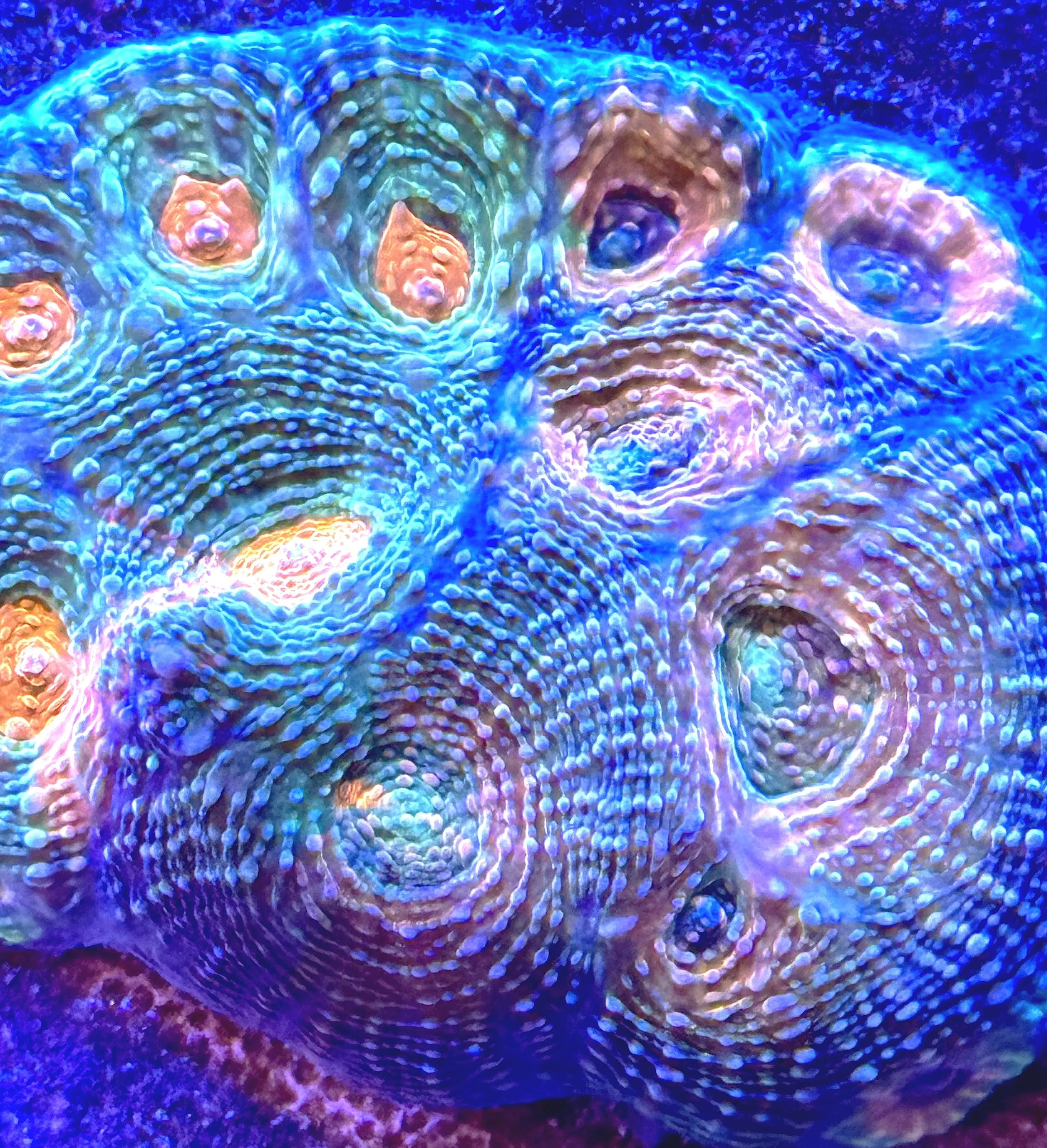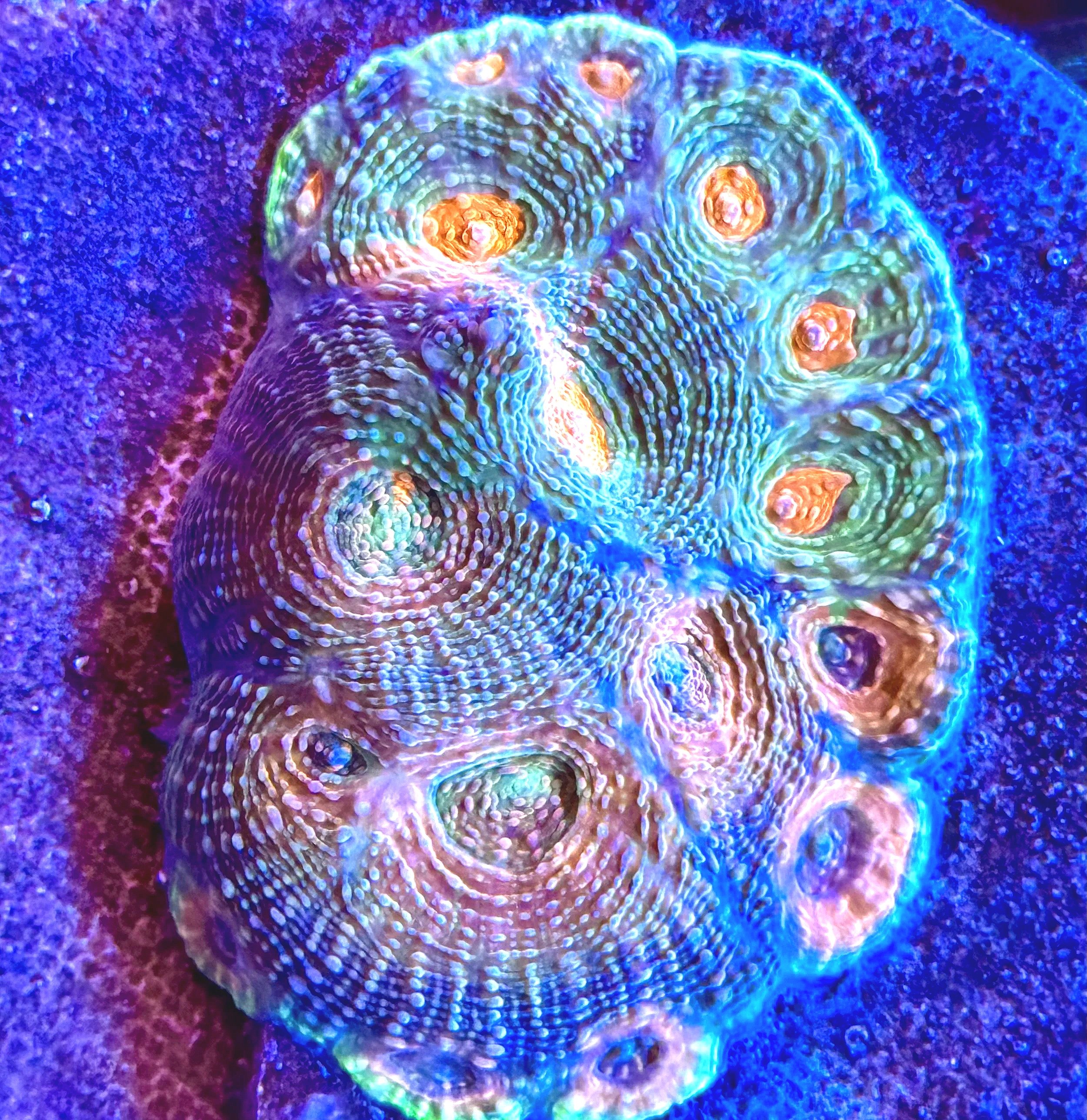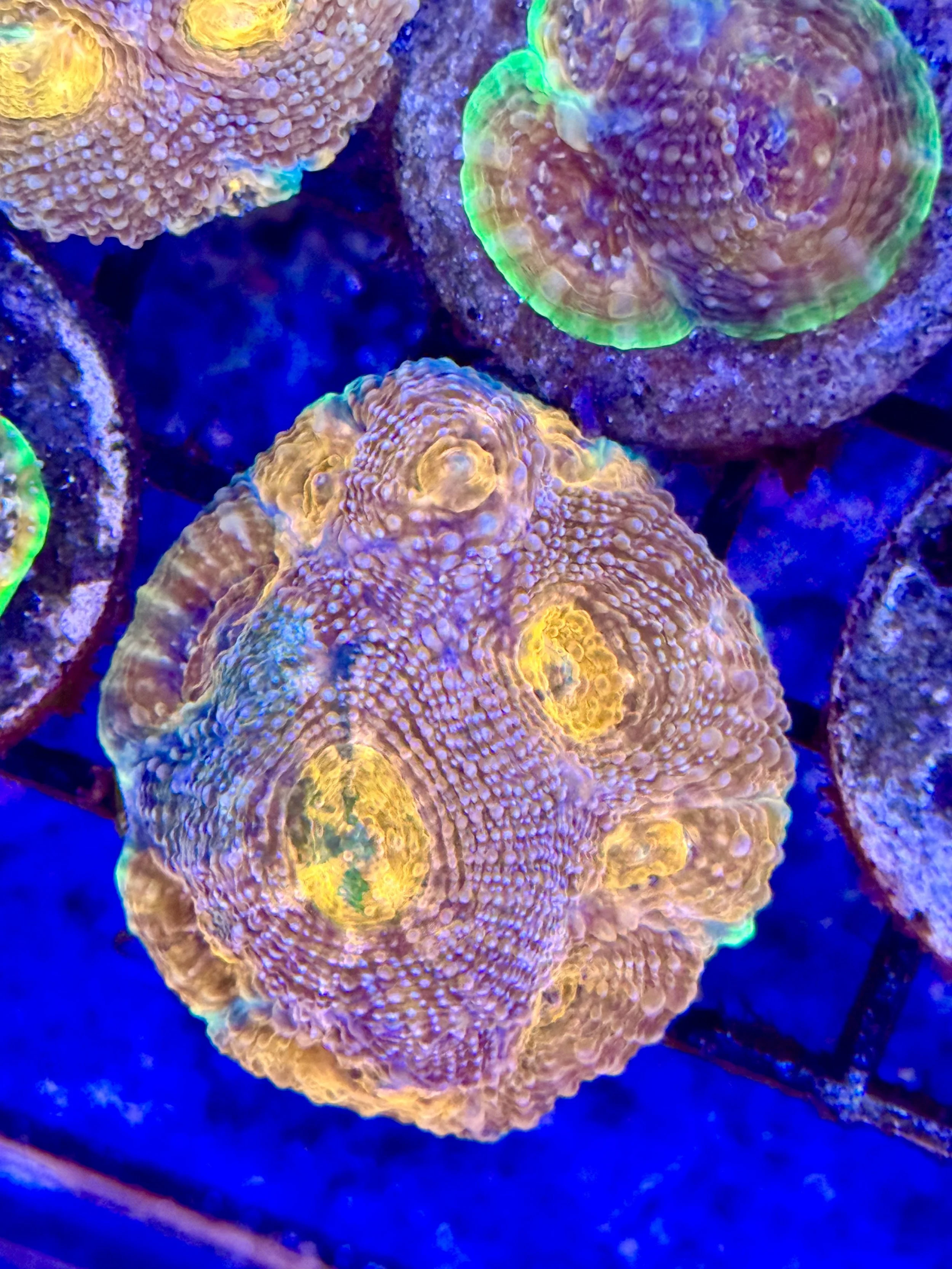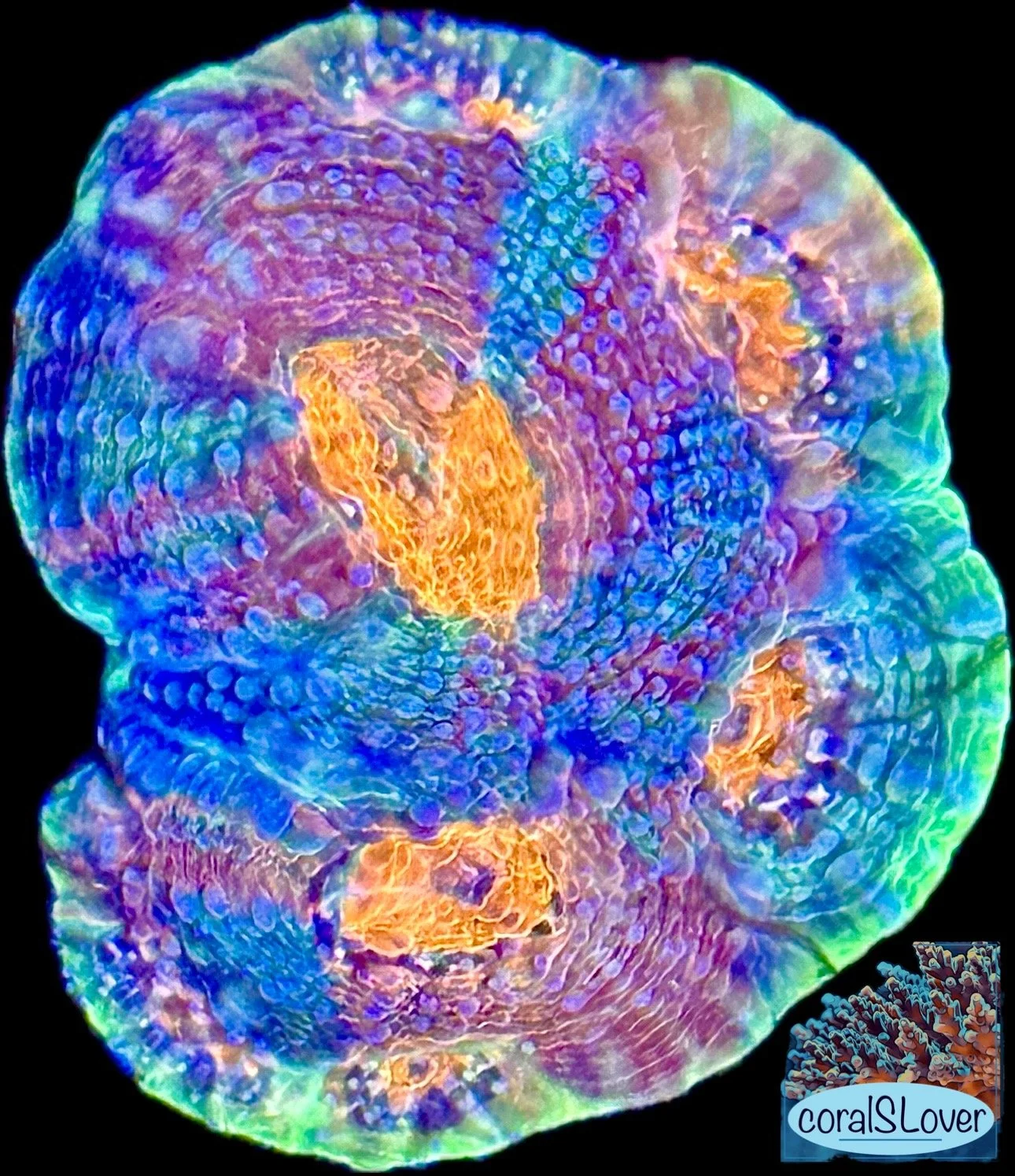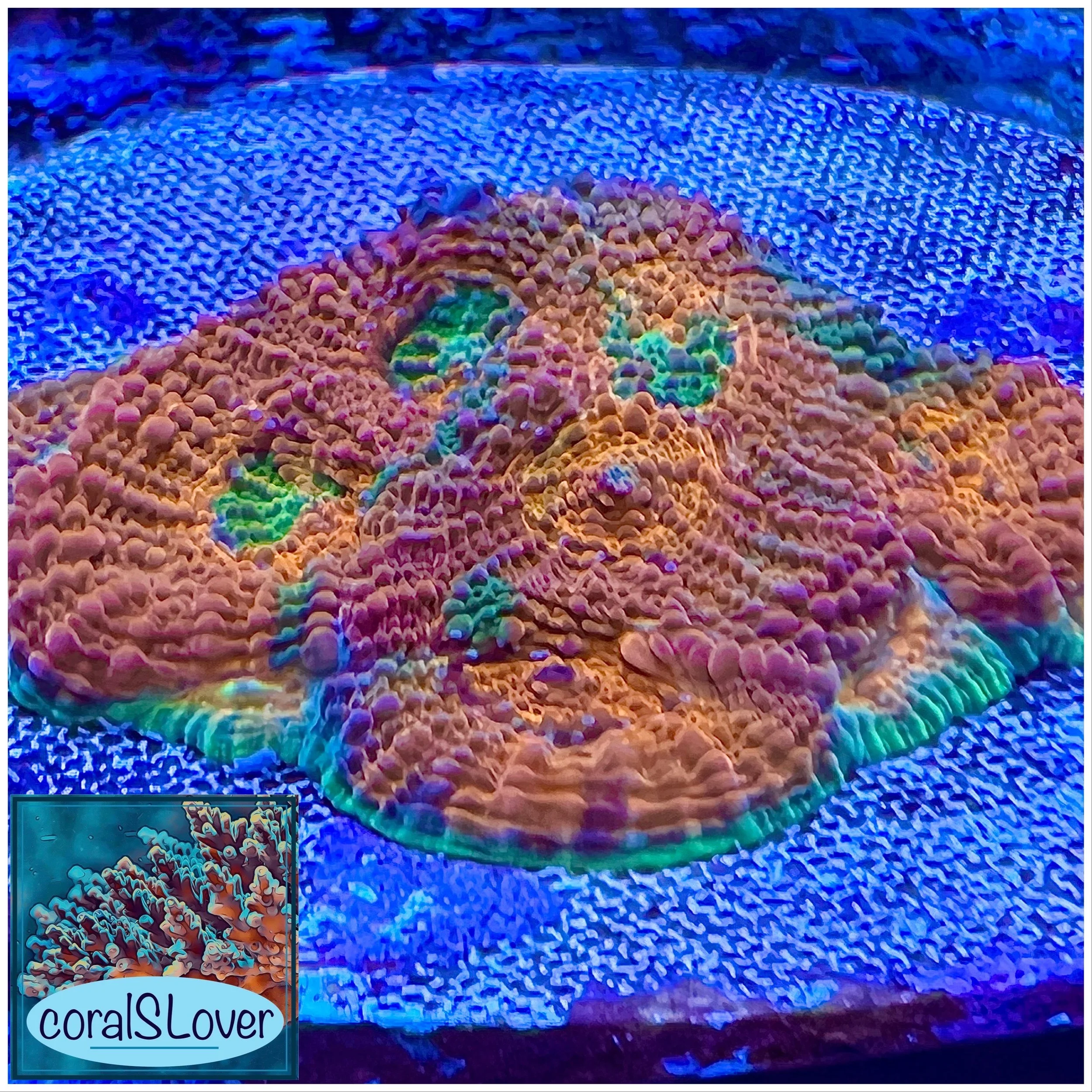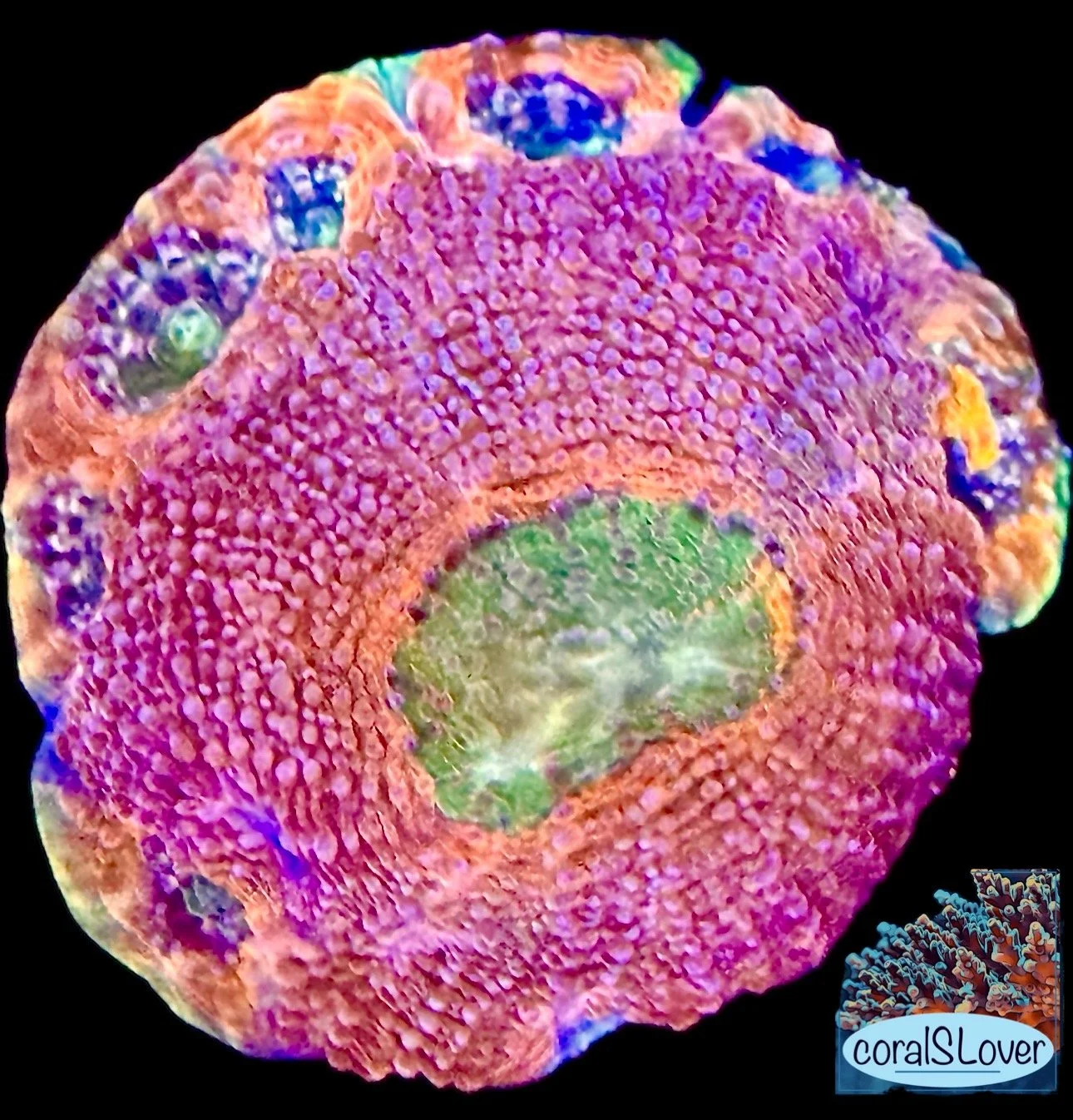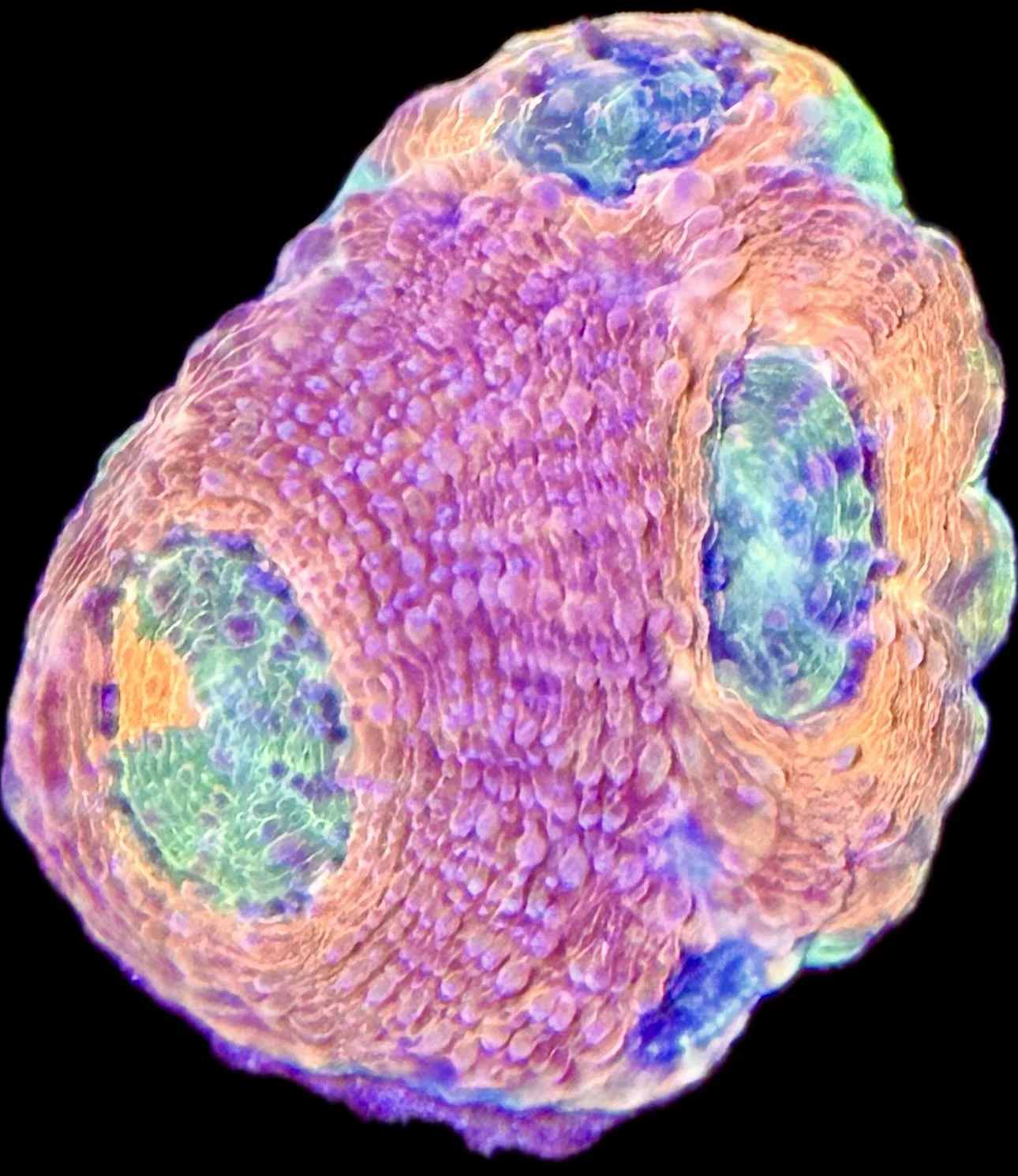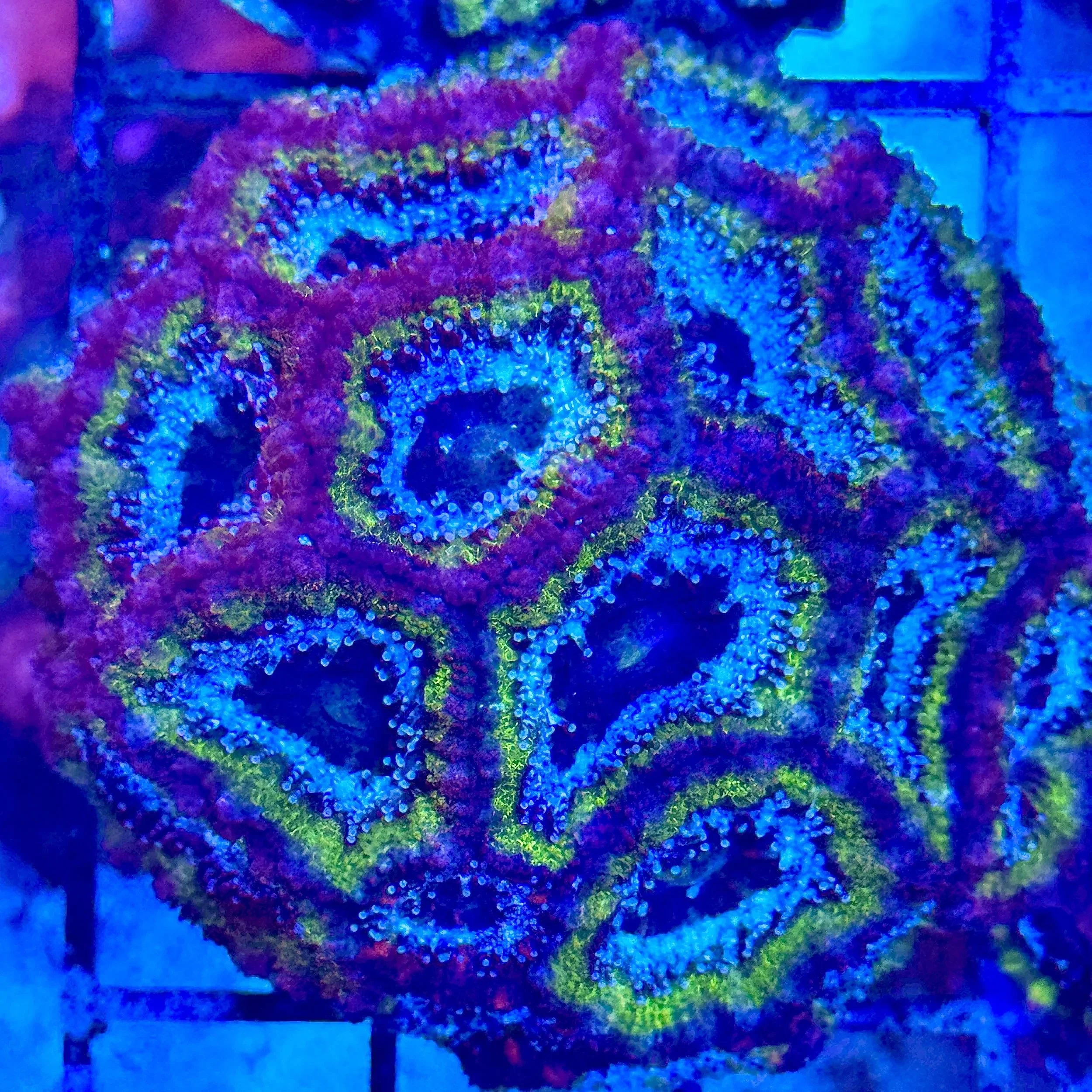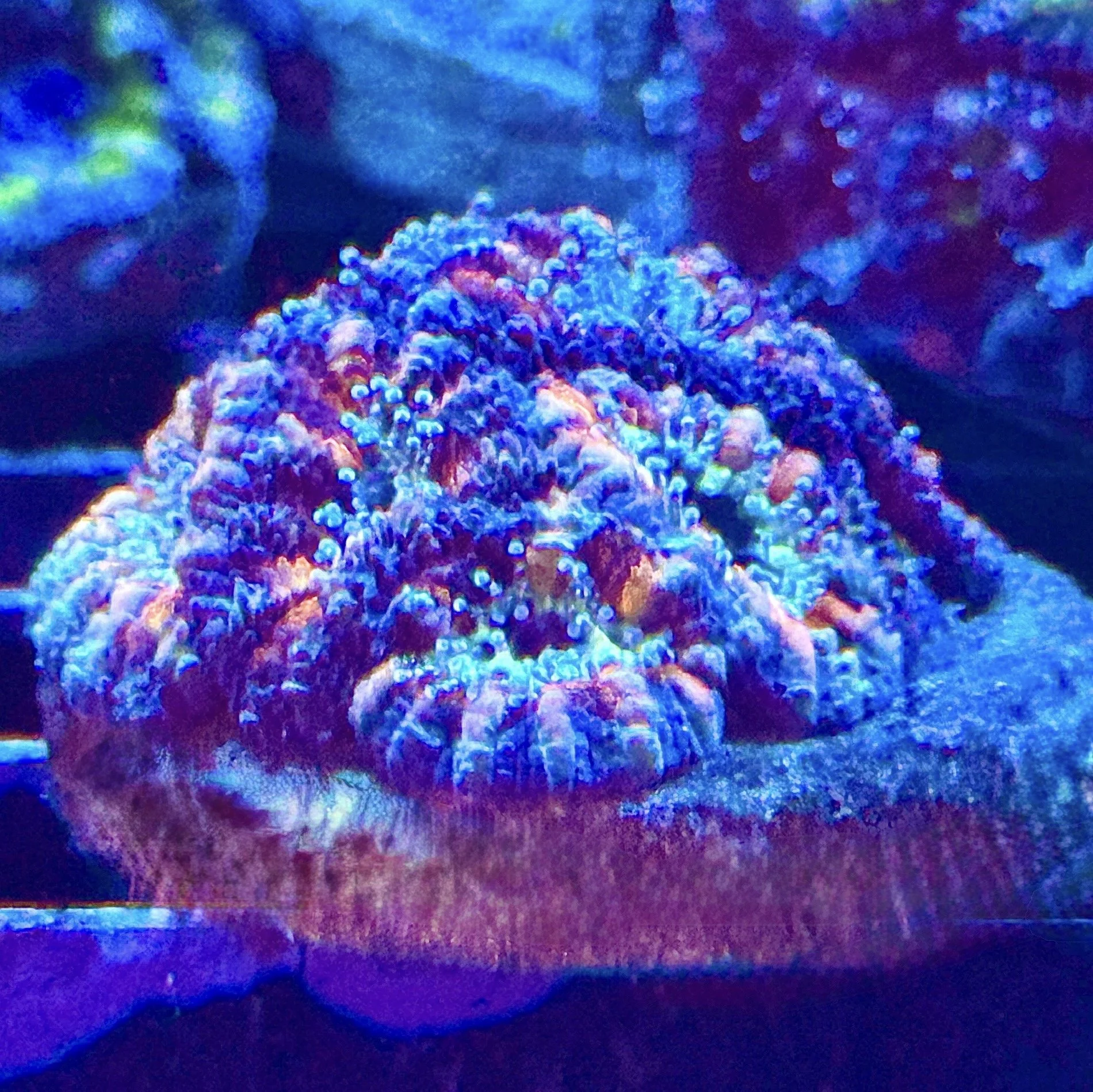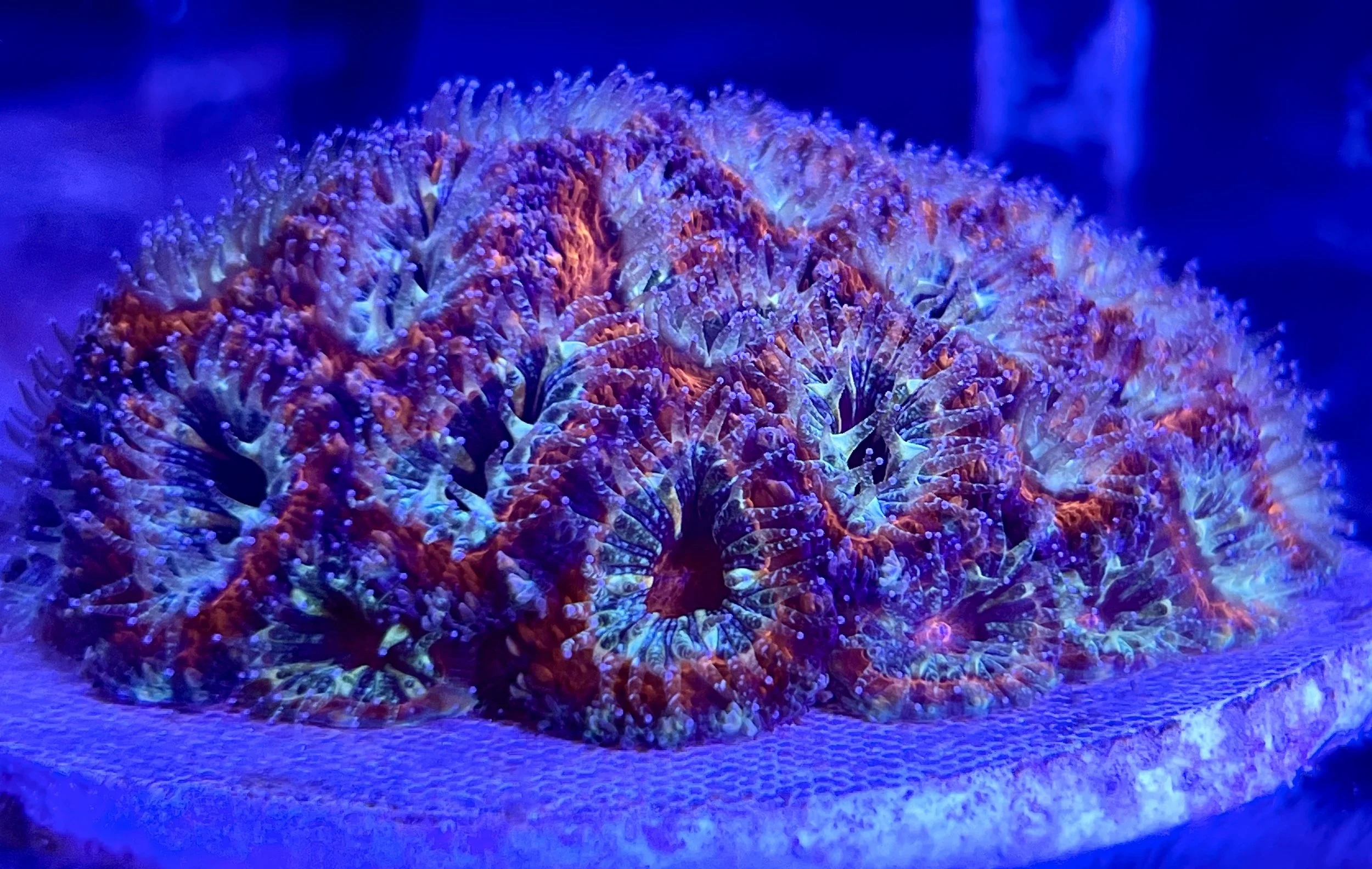Information
The Acan Echinata Acanthastrea echinata is a colorful large polyp stony (LPS) coral in the Mussidae family. They are found in some intense oranges to intense green and red combinations.The Echinata Coral is the second most popular and sought after of the Acanthastrea species, following the Acan Lord A. lordhowensis. Some descriptive names the A. echinata are known by include Echinata Coral, Starry Cup Coral, Artichoke Coral, Pineapple coral, Rainbow Acanthastrea, Rainbow Acan, and Acan Brain Coral.
The Acan Echinata is one of the easiest of the LPS (large polyp stony) corals to care for. They are not at all demanding and will readily grow new polyps. They do not need to be fed since they use the dissolved organics in the tank for nourishment. Try to avoid housing with soft corals as they do not do as well in their presence, and some will die if the softy population is too high. Provide a low water movement and moderate lighting. Do not use metal halides since the Acan Echinata will not fully open under lighting that is too strong.
Lighting
Medium, do not use metal halide.
Water Flow
As for flow and placement, there are a couple of things I look for. Micromussa do not require a ton of flow, so I look to provide just enough so detritus does not settle on them. Most of the time hobbyists place Micros towards the bottom of the tank so it is important that they get enough flow to keep them clean. On the other hand, I think feeding is important for long term health so preferably the flow can slowed during feeding time to allow the coral to grab pieces out of the water column.
Feeding
Acanthastrea Coral Feeding: The Acanthastrea genus, like other large polyp stony (LPS) corals, have developed several feeding strategies. Through a symbiotic relationship with a marine algae, known as zooxanthellae, they receive some of their nutrients. They also capture planktonic organisms, food particles from the water column, and can absorb dissolved organic matter.
In captivity, A. echinata feed mostly on nanoplankton and dissolved organics in the water, though like Ricordea (a type of Mushroom Coral), they can be fed zooplankton and very small prey.


